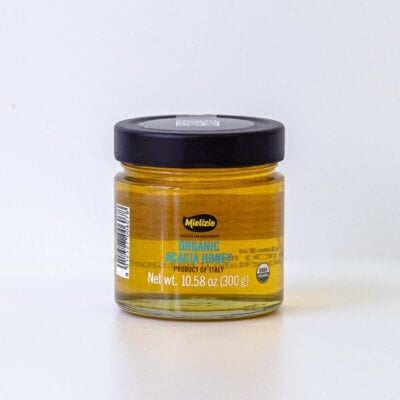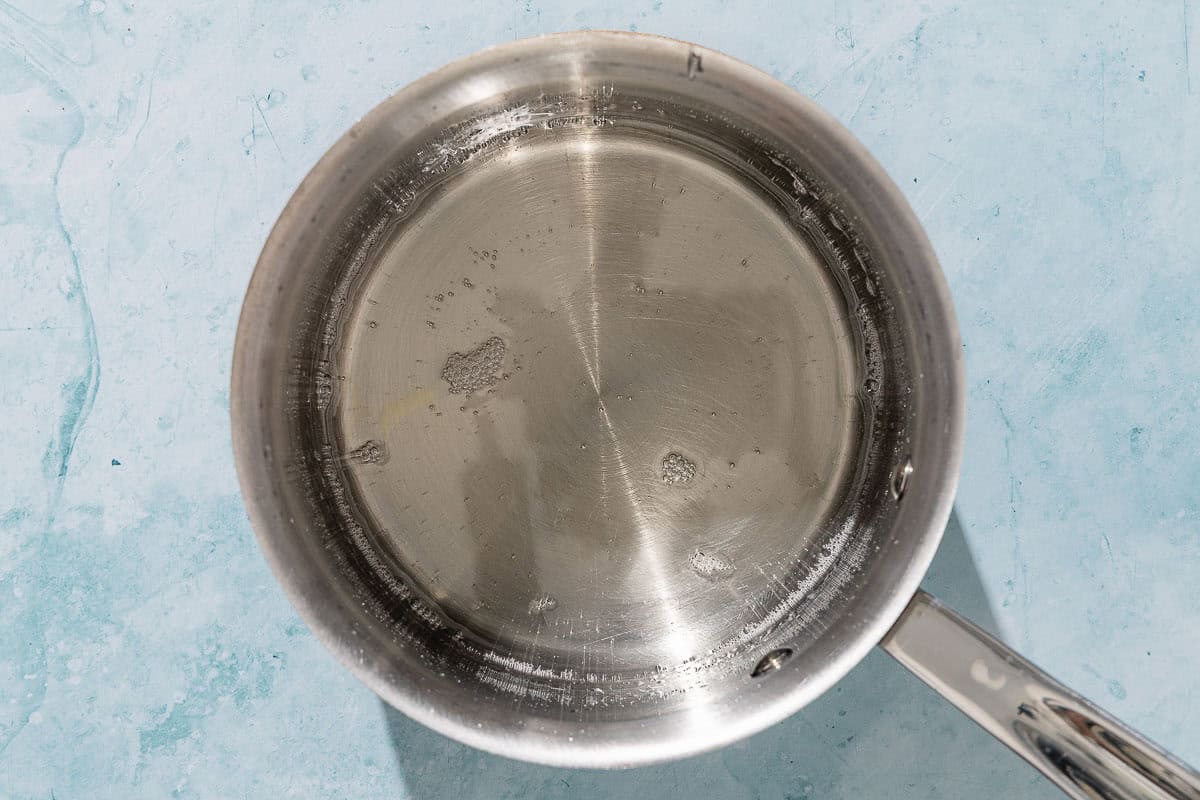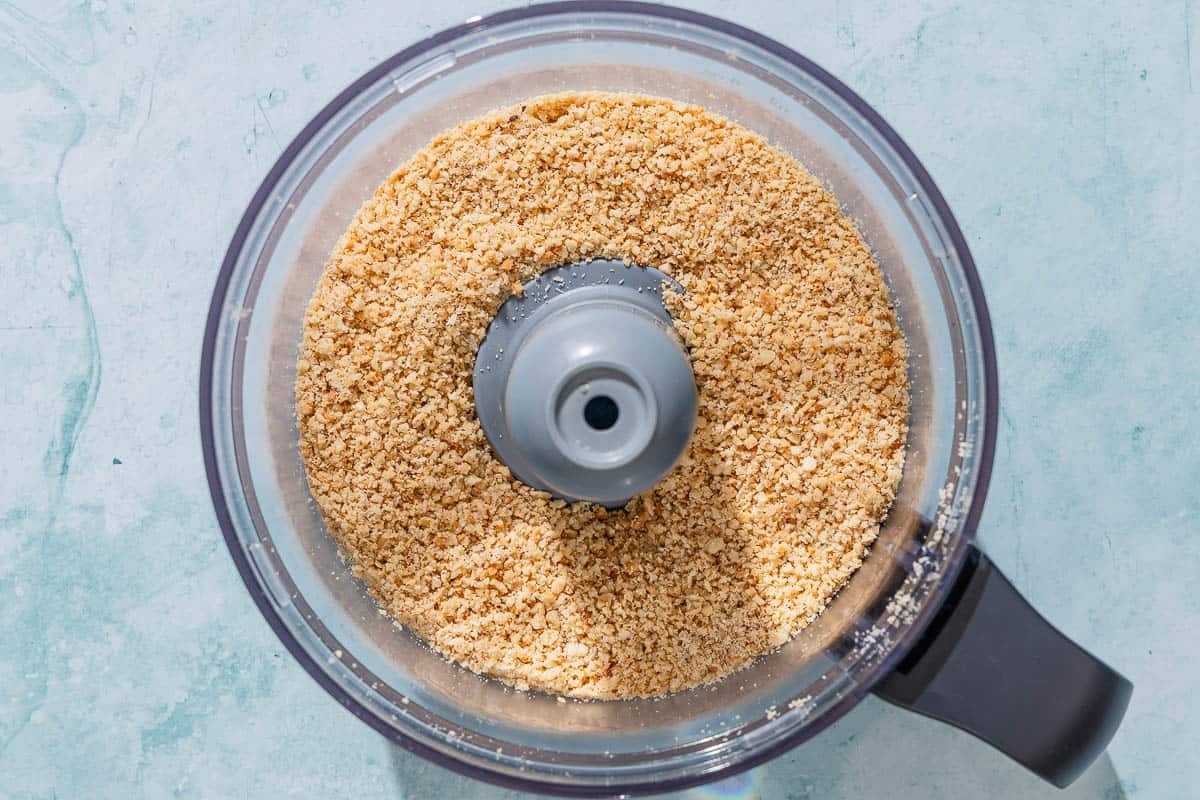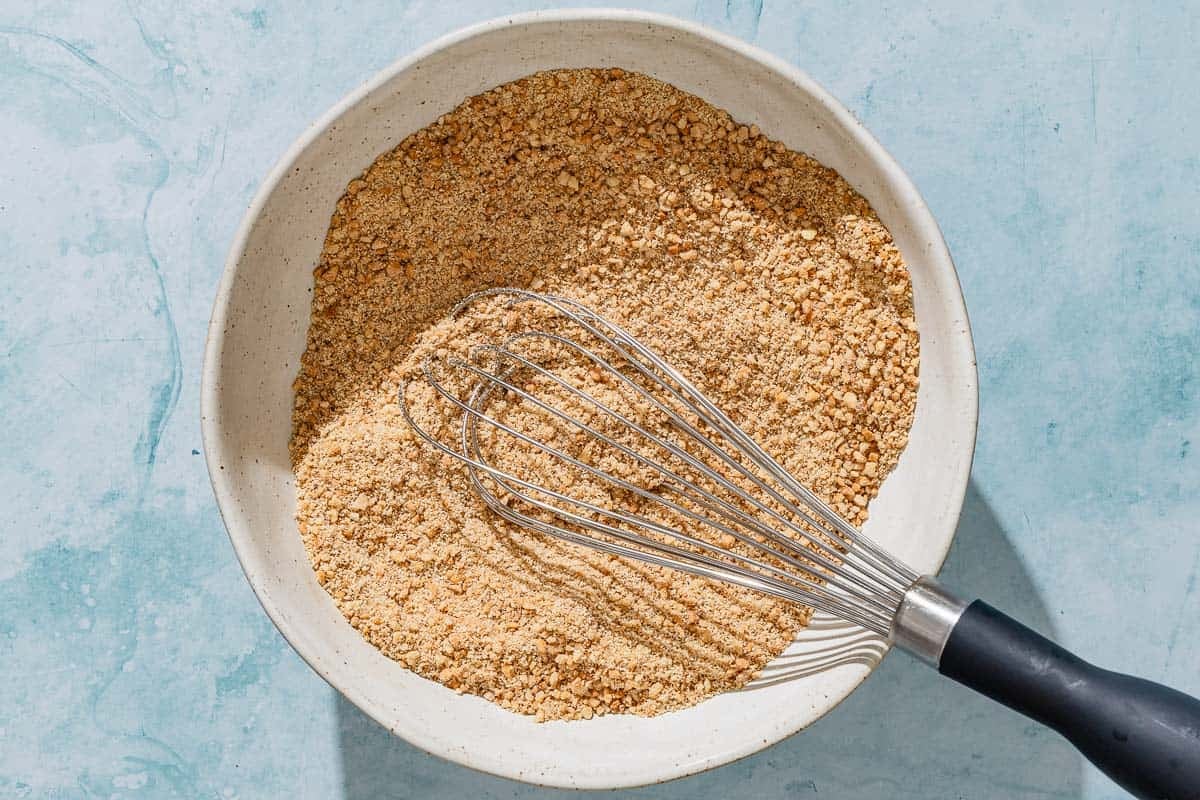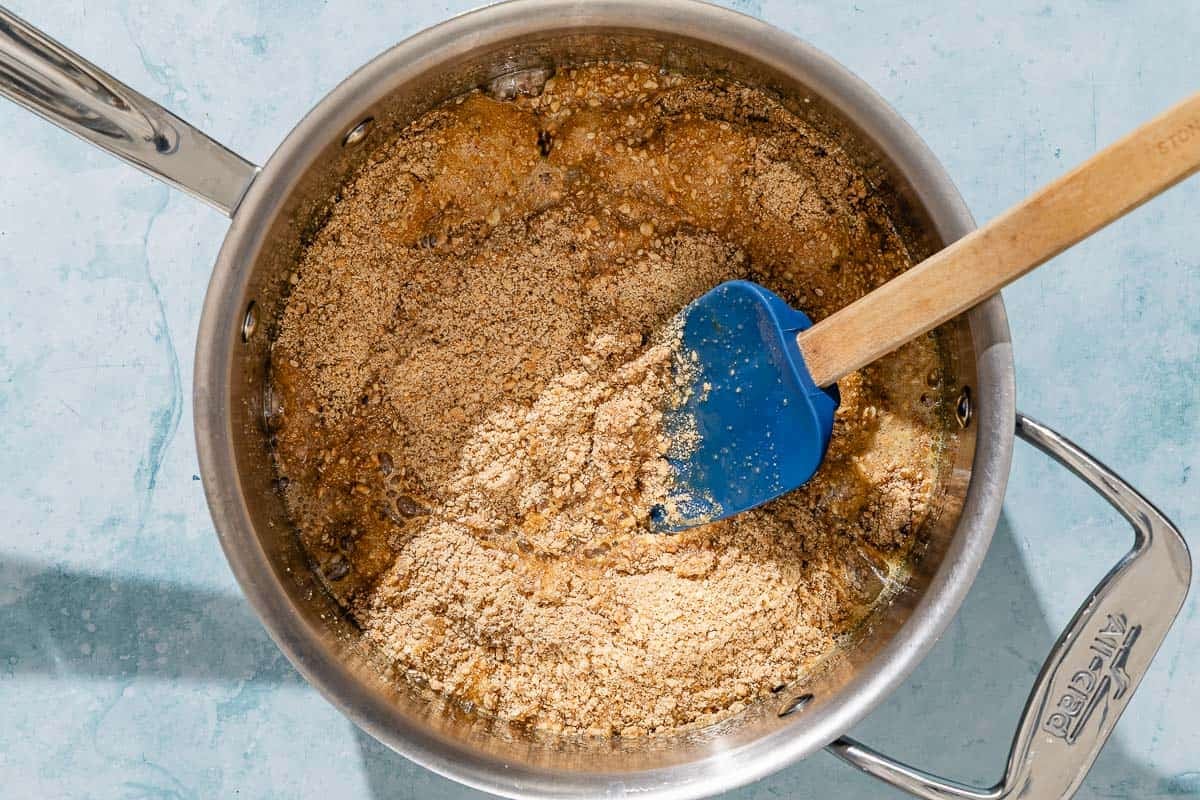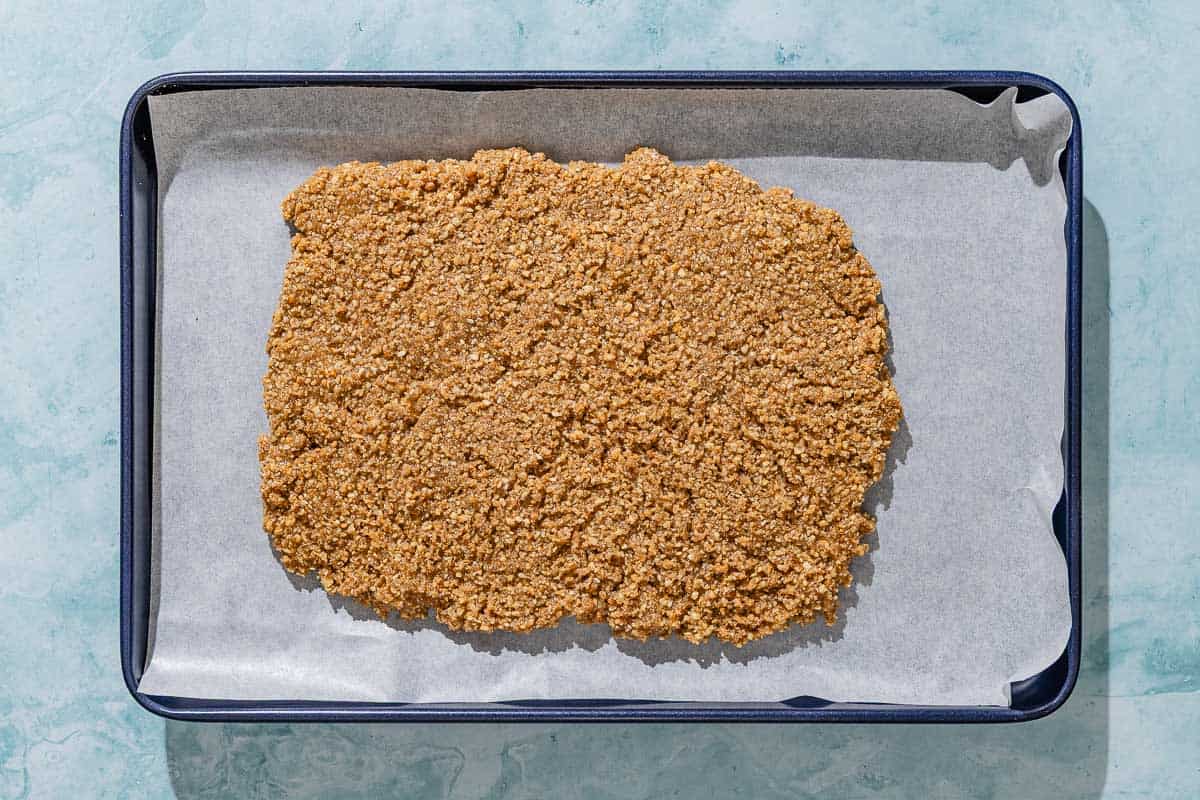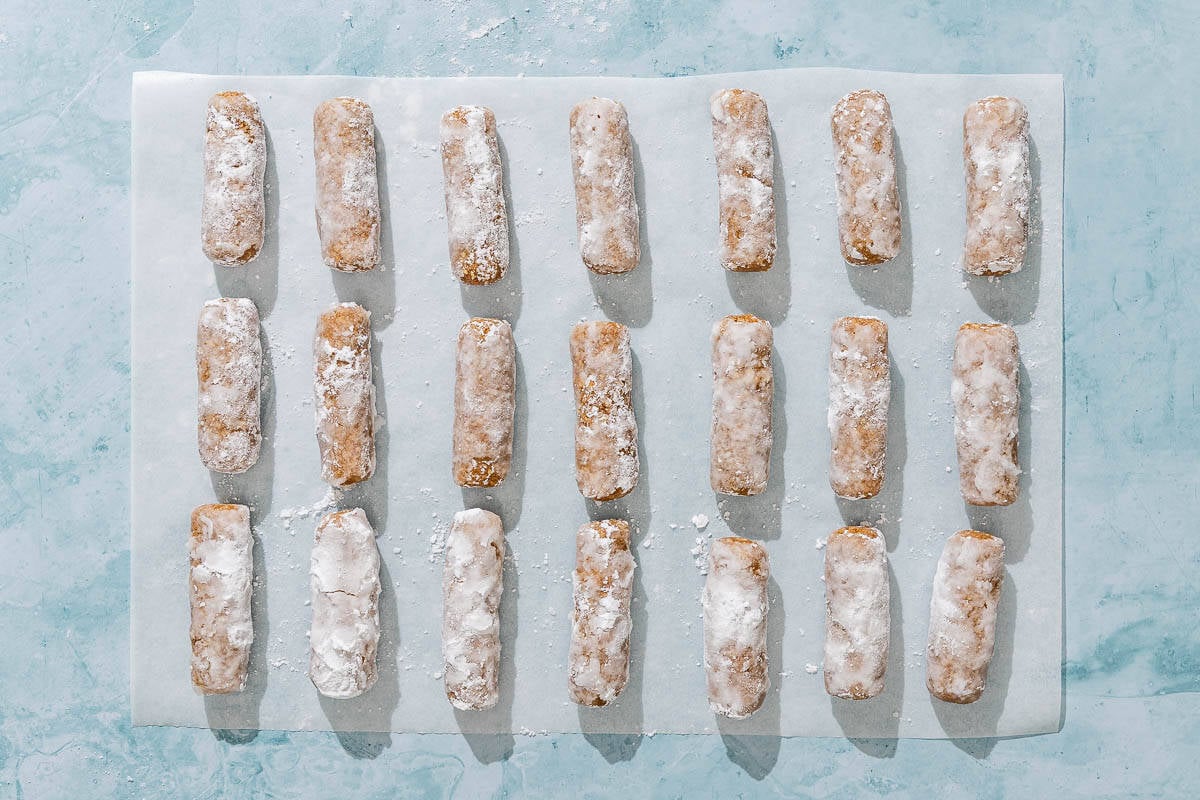These alfajores aren’t the dulce de leche sandwich cookies familiar in South America. They’re a classic, no-bake Andalusian holiday cookie made with honey, toasted nuts, and warm spices, shaped into small cylinders and coated in sugar.
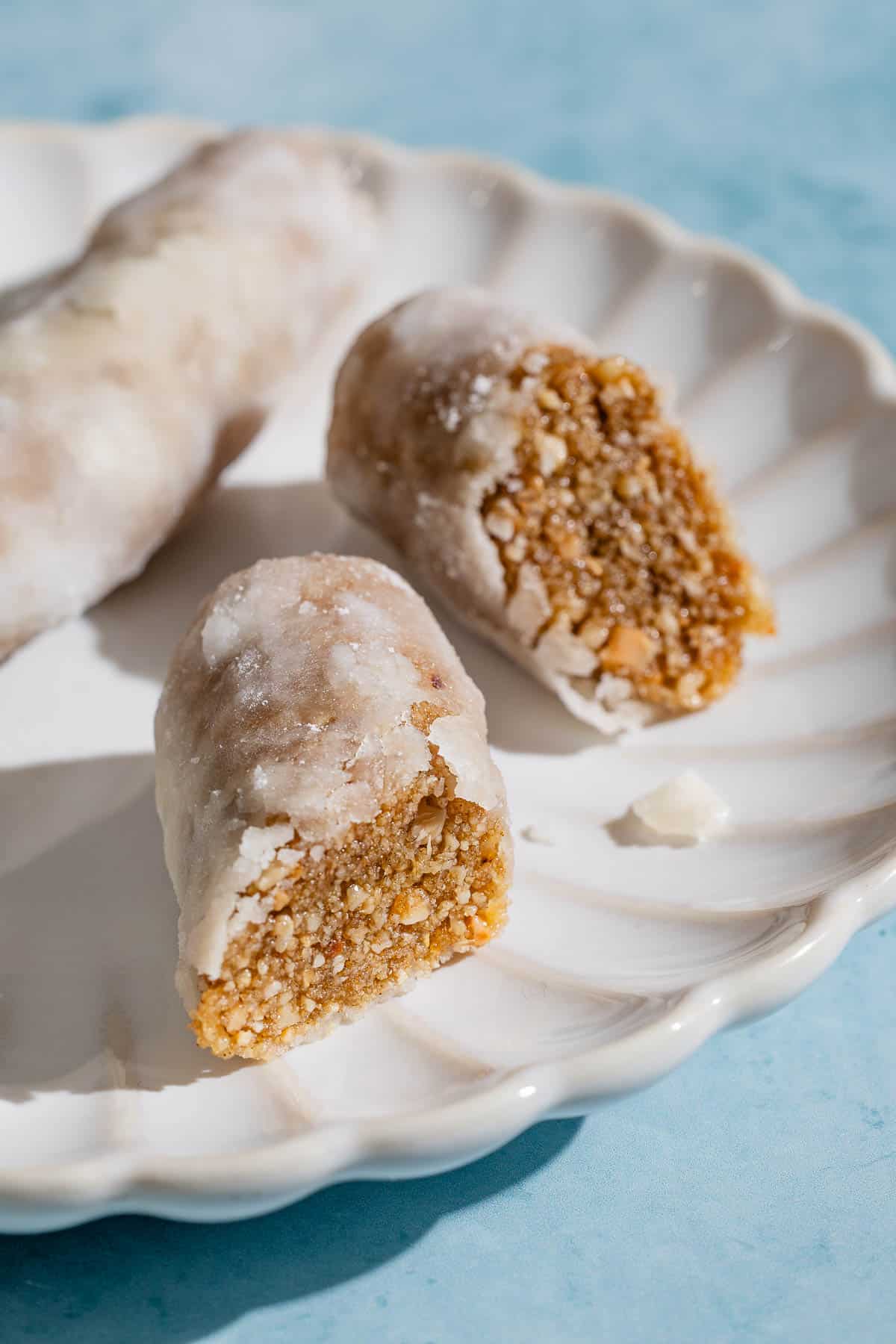
It’s easy to see why alfajores have been a southern Spanish Christmas tradition for centuries. The snowy sugar coating of these no-bake cookies crackles as you bite in, giving way to a chewy honey-nut center. Cinnamon, coriander, and cloves create a warming aroma that makes them perfect for a cozy pause with coffee or tea.
In Spain, I have found these spiced honey cookies individually wrapped at Christmas markets, but they’re easy to make at home. While boiling a sugar syrup and honey may cause some pause, there are no complicated techniques, sugar work, or even baking after toasting the nuts.
Try them once and they are sure to make it on your regular holiday cookie rotation.
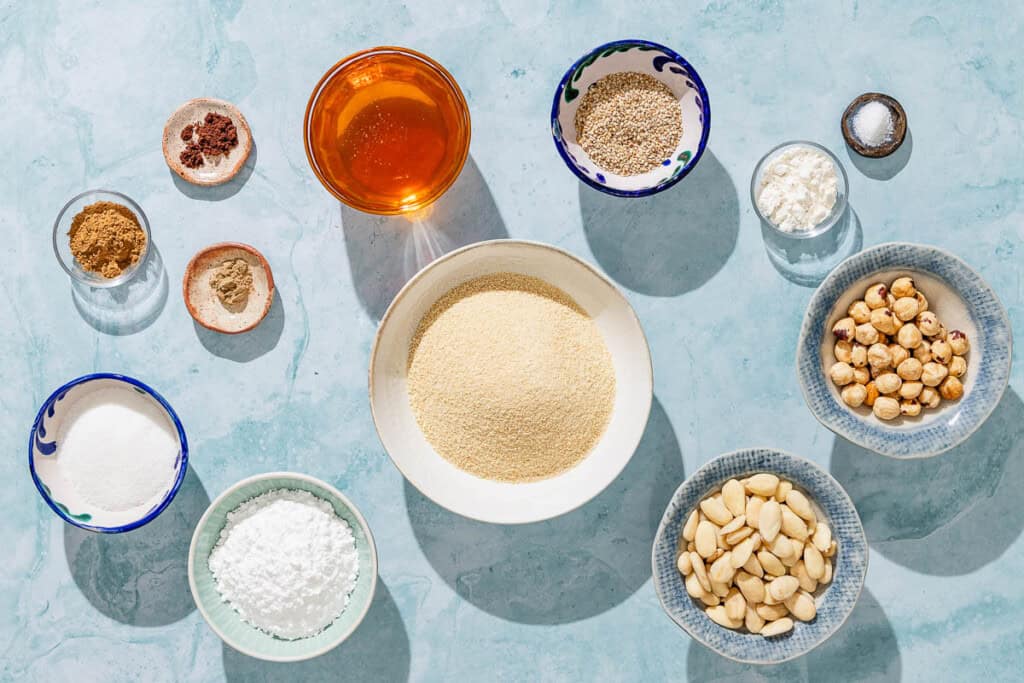
Alfajores Ingredients
Alfajores are made with a honey- and nut-based dough, coated in a sugary shell. Here’s everything you’ll need:
Cookie Dough
- Honey hydrates the cookie dough, adding a sweet, floral flavor to the cookies.
- Almonds: Use untoasted, blanched almonds, since the skins can add some bitterness to the cookies. If you can find them, Marcona almonds are the traditional choice and have a sweet, buttery flavor.
- Hazelnuts: Look for blanched hazelnuts, if you can find them. Otherwise, the skins should rub off easily after toasting.
- Sesame seeds: Use untoasted white sesame seeds. Toasting them just before mixing the dough ensures they have a rich, nutty flavor.
- Breadcrumbs: Plain, fine breadcrumbs work best. Avoid seasoned, coarse, or panko breadcrumbs. To make the cookies gluten-free, you can substitute gluten-free breadcrumbs.
- All-purpose flour: A little bit of flour absorbs excess moisture and helps bind the dough. To make the cookies gluten-free, substitute your favorite gluten-free 1-to-1 flour.
- Spices: Ground cinnamon adds warm, sweet spice and complements the nuts and honey. Ground coriander adds a citrusy, earthy flavor, and ground cloves add a complex, sweet, and peppery flavor.
- Salt: A pinch of salt elevates the other flavors in the cookies.
Sugar Coating
- Granulated sugar: A sugar syrup made by boiling granulated sugar and water on the stove coats the alfajores, creating a sweet shell that prevents the interior of the cookies from drying out.
- Powdered sugar: A dusting of powdered sugar helps set the syrup after coating the cookies and gives them a snow-dusted look.

How to Make Alfajores
You’ll mix the dough for these no bake cookies right in the saucepan used to heat the honey. Start at least one day before you plan to serve them, as the sugar coating needs time to set. Here’s how to make them:
Make the Cookies
- Get ready. Preheat the oven to 350°F.
- Toast the nuts. Add the almonds and hazelnuts to a rimmed baking sheet in a single layer. Roast the nuts for 6 minutes. Add the sesame seeds to the pan. Return the pan to the oven, and roast for 4 minutes longer until the nuts are toasted and fragrant. Set aside to cool slightly.
- Make the syrup. In a small saucepan, combine the granulated sugar and water. Bring to a boil over medium-high heat. Do not stir. Continue to cook for 3 minutes, or until the syrup registers 225°F on a candy or instant-read thermometer. Remove from the heat and allow the syrup to cool while preparing the cookies.
- Grind the almonds and hazelnuts. To the bowl of a food processor, add the toasted almonds and hazelnuts. Pulse the nuts to make a coarse meal with a texture like sand. They should not start to form a paste.
- Mix the dry ingredients. Transfer the ground nuts to a mixing bowl. Add the sesame seeds, breadcrumbs, flour, cinnamon, coriander, cloves, and salt. Whisk to combine.
- Make the dough. Line a baking sheet with parchment paper and set aside. Bring the honey to a boil in a medium saucepan over medium-high heat. Add the dry ingredients and mix with a heat-proof spatula until thoroughly combined. Take the pan off the heat.
- Cool the dough. Scrape the dough out of the saucepan and onto the parchment-lined baking sheet. Spread the dough into a thin layer, about 1/2 to 1 inch thick, so it cools quickly. Let the dough cool until it’s cool enough to handle, but still warm, 5 to 10 minutes.
- Shape the cookies. Once the dough is cool enough to handle comfortably, portion and shape the cookies. Divide the dough into 20 to 24 roughly equal pieces, about 30 grams each. Using the palm of your hand, roll each piece of dough into a cylinder about 2 1/2 inches long on a clean work surface.
Add the Coating
- Add the sugar coating. Add the powdered sugar to a wide, shallow bowl. Set up a dredging station with the shaped cookies, the cooled syrup, the powdered sugar, and a clean piece of parchment paper. Working one at a time, use two forks to dip a cookie in the syrup, rotating it to coat the entire surface. Transfer the cookie to the bowl of powdered sugar and toss to coat. Place the coated cookie on the clean parchment paper. Continue coating the remaining cookies. Continue coating the remaining cookies. There will be extra syrup and powdered sugar left over.
- Set and serve. Leave the cookies uncovered to dry until the sugar coating forms a hard crust, at least 4 hours and preferably overnight.
What Are Alfajores?
Alfajores are a traditional Andalusian Christmas no bake cookie made with honey, breadcrumbs, toasted nuts, and spices. They were originally (and sometimes still are) called alajú, derived from the Arabic al-hasú, meaning “filling.” The cookies descend from the long history of Moorish and Jewish influence in Spain.
Also called Medina Sidonia alfajores, the cookies are closely associated with this city, where they’ve been made for at least 500 years. The European Union even granted a Protected Geographical Indication (PGI) for the cookies, defining where they can be produced and the ingredients permitted when intended for commercial sale.
While they share the same name, alfajores in Latin America are sandwich cookies filled with dulce de leche and often covered in chocolate or meringue. Today, they differ substantially, but Latin American alfajores originally derived from the Andalusian cookies and have evolved over time.
Tips
Making a syrup and boiling the honey can make these cookies seem like an advanced project. With a few tips and strategies in mind, these no-bake cookies are actually much easier than they appear.
- Be mindful when working with hot sugar syrup and honey, as they boil at even higher temperatures than water.
- Wait until the dough has cooled enough to handle comfortably before dividing and shaping the cookies. The dough is more malleable while it’s still warm, but it won’t set too firm to work with if it cools all the way.
- While shaping the cookies, you can lightly oil your hands if the dough is sticking to you. I roll the dough into balls with my hands, and then roll them on a piece of parchment paper on the counter to form the cylinders.
- You can serve them after letting them sit for 4 hours, but leaving them overnight is ideal. The shell will harden slightly, giving a pleasant contrast between the sugary shell and chewy interior.

What to Serve with Alfajores
The rich, spiced flavor pairs beautifully with a cup of coffee or tea. Try them with black tea or this herbal Greek mountain tea.
For a holiday platter or a sweet gift box, pair them with candied orange peel and candied almonds for a cohesive mix of holiday flavors. You can wrap the alfajores individually in paper candy wrappers, like they do in Spain, for easy gifting.
More Mediterranean Christmas Cookies
Browse all Mediterranean recipes.
Visit Our Shop.
Andalusian Alfajores (Honey Nut No Bake Cookies)
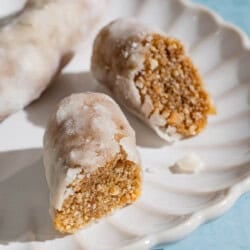
Equipment
Ingredients
For the Cookies
- 3/4 cup blanched almonds (107g)
- 1/2 cup blanched hazelnuts (71g)
- 2 tablespoons sesame seeds (18g)
- 1 cup fine breadcrumbs (168g)
- 1 tablespoon all-purpose flour
- 2 teaspoons ground cinnamon
- 1/2 teaspoon ground coriander
- 1/2 teaspoon ground cloves
- 1/2 teaspoon kosher salt
- 1 cup honey (340g)
For the Coating
- 2/3 cup granulated sugar (133g)
- 1/2 cup water (120ml)
- 1 cup powdered sugar (113g)
Instructions
- Get ready. Preheat the oven to 350°F.
- Toast the nuts. Add the almonds and hazelnuts to a rimmed baking sheet in a single layer. Roast the nuts for 6 minutes. Add the sesame seeds to the pan. Return the pan to the oven, and roast for 4 minutes longer until the nuts are toasted and fragrant. Set aside to cool slightly.
- Make the syrup. In a small saucepan, combine the granulated sugar and water. Bring to a boil over medium-high heat. Do not stir. Continue to cook for 3 minutes, or until the syrup registers 225°F on a candy or instant-read thermometer. Remove from the heat and allow the syrup to cool while preparing the cookies.
- Grind the nuts. To the bowl of a food processor, add the toasted almonds and hazelnuts. Pulse the nuts to make a coarse meal with a texture like sand. They should not start to form a paste.
- Mix the dry ingredients. Transfer the ground nuts to a mixing bowl. Add the sesame seeds, breadcrumbs, flour, cinnamon, coriander, cloves, and salt. Whisk to combine.
- Make the dough. Line a baking sheet with parchment paper and set aside. Bring the honey to a boil in a medium saucepan over medium-high heat. Add the dry ingredients and mix with a heat-proof spatula until thoroughly combined. Take the pan off the heat.
- Cool the dough. Scrape the dough out of the saucepan and onto the parchment-lined baking sheet. Spread the dough into a thin layer, about 1/2 to 1 inch thick, so it cools quickly. Let the dough cool until it’s cool enough to handle, but still warm, 5 to 10 minutes.
- Shape the cookies. Once the dough is cool enough to handle comfortably, portion and shape the cookies. Divide the dough into 20 to 24 roughly equal pieces, about 30g each. Using the palm of your hand, roll each piece of dough into a cylinder about 2 1/2 inches long on a clean work surface.
- Add the sugar coating. Add the powdered sugar to a wide, shallow bowl. Set up a dredging station with the shaped cookies, the cooled syrup, the powdered sugar, and a clean piece of parchment paper. Working one at a time, dip a cookie in the syrup, rotating it to coat the entire surface with a thin layer of syrup. Transfer the cookie to the bowl of powdered sugar and toss to coat. Place the coated cookie on the clean parchment paper. Continue coating the remaining cookies. Continue coating the remaining cookies. There will be extra syrup and powdered sugar left over. I like to use a couple of forks to help drain the cookies from the syrup and keep my hands clean.
- Set and serve. Leave the cookies uncovered to dry until the sugar coating forms a hard crust, at least 4 hours and preferably overnight.
Notes
Nutrition
Honey from The Mediterranean!
Indulge in the delicate sweetness of Italian Organic Acacia Honey, sourced from the lush acacia woods of the Pre-Alps and other regions of the Italian peninsula.
